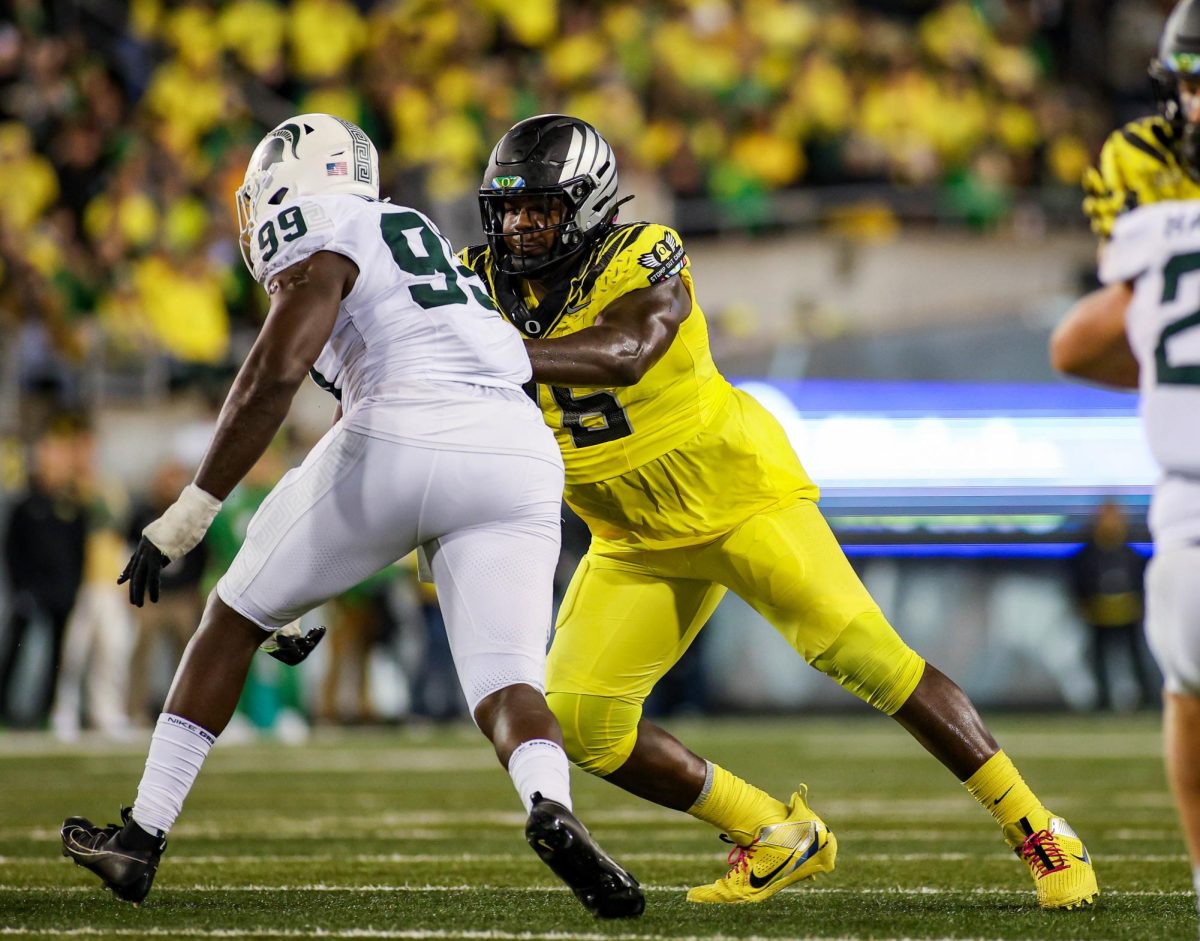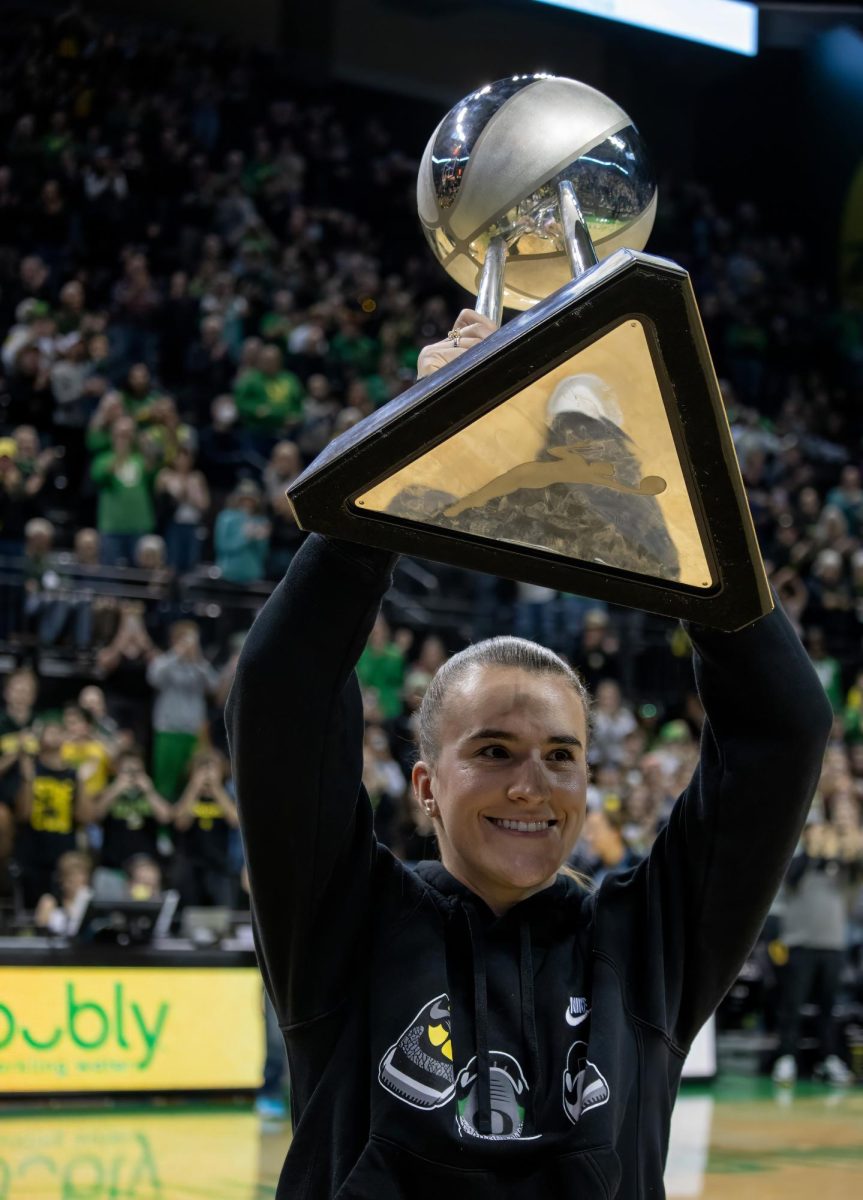Weeks of speculation, predicting, wondering and worrying about what the future of Oregon athletics holds have finally come to an end. The Big Ten Conference announced on August 4 that the Universities of Oregon and Washington will become its newest members at the start of the 2024-25 academic year.
“I’m thrilled that the University of Oregon has the opportunity to join the nation’s preeminent academic-athletic conference,” UO President John Karl Scholz said. “Our student-athletes will participate at the highest level of collegiate athletic competition, and our alumni, friends and fans will be able to carry the spirit of Oregon across the country.”
It’s absolutely no secret that NCAA football is in one of its most chaotic and unpredictable periods ever. The adaptation of the name, image and likeness policy to college athletics in 2021 changed the recruiting game forever. Prospects, now with an opportunity to essentially get paid for playing, are able to choose where to play based on money over anything else. Now, one of the oldest sports in collegiate athletics is experiencing another monumental change: conference realignment.
The first dominoes fell in summer 2021 when Texas and Oklahoma announced they’d be leaving the Big 12 –– a conference that had hosted the two powerhouses since 1996 –– and joining the Southeastern Conference for the 2024 season.
Pandemonium ensued.
Two years have come and gone since then and conferences are hardly recognizable anymore. UCLA and USC are set to join Oregon and Washington in leaving the Pac-12 at the end of this upcoming season. Houston, BYU, Cincinnati and University of Central Florida have already joined the Big 12 and Colorado, Utah, Arizona and Arizona State plan on heading to the Big 12 in 2024.
It’s madness, and not the kind college sports fans enjoy in March.
These are some of the most trying times that college football fans have had to endure. Fans used to be able to look forward to watching their favorite players on their favorite teams playing storied rivalries week after week.
Now, it seems each team’s schedule, opponents and travel flips a complete 180° each season. It’s a chance to create new rivalries, but hard to see storied matchups come to a close. And, as for watching the favorite players, NIL has made transferring so common and acceptable that now, it’s hard to keep up with who’s on what roster playing against which teams as college football continues to spiral into complexity.
Maryland and Oregon are in the same conference, BYU and West Virginia suddenly have shared opponents, UCF has gone from a formidable Group of Five opponent to a Big 12 contender and the Pac-12, having been whittled down to four teams, likely won’t exist in a year.
Oregon’s move, specifically, is an intriguing one. On one hand, the Ducks look to bring in more money in the Big Ten than it ever received in the Pac-12. It’s been reported by CBS Sports that Oregon is expected to make $30 million in its first year with the Big Ten — a number that could grow to as much as $60 million over the next few points. From a business standpoint, the realignment makes a lot of sense.
Not to mention, the conference seems happy to welcome Oregon and Washington as its 17th and 18th members.
“When considering the full spectrum of academic, athletic and research excellence, the alignment with our member institutions is extremely clear,” Big Ten Council of Presidents/Chancellors Chair Robert Jones said. ”We are excited to welcome [Oregon and Washington] and look forward to collaborating and competing with them in the years ahead.”
With the addition of the Ducks and Huskies, the Big Ten will be the biggest NCAA conference in 2024 with a whopping 18 teams. As of now — which seems subject to change, like everything else in the game — the conference will play host to the Universities of Illinois, Indiana, Iowa, Maryland, Michigan, Michigan State, Minnesota, Nebraska, Northwestern, Ohio State, Oregon, Penn State, Purdue, Rutgers, UCLA, USC, Washington and Wisconsin next year.
It’s a geographical nightmare and could make it tricky to navigate student-athlete lives. But, it’s expected that some of this new money will be used to make things as easy on these athletes as possible.
Regardless, travel time will increase. Instead of traveling to Arizona or Utah, cross-country trips to Maryland and Ohio could become a new reality for Duck athletes. Finding a way to keep up on classes and school work while also balancing playing at the highest collegiate level just became much harder, especially looking at sports like basketball, where multiple-stop road trips are common.
However, things on the Oregon, Washington and Big Ten fronts still seem fresh and exciting. But the Ducks will be leaving some storied rivalries behind.
The recent movements currently leave Oregon State, Cal, Stanford and Washington State alone in what’s left of the Pac-12. These schools are less than thrilled with Oregon’s decision to leave.
“We are disappointed with the recent decisions by some of our Pac-12 peers,” Washington State University President Kirk Schulz said. “While we had hoped that our membership would remain together, this outcome was always a possibility and we have been working diligently to determine what is next for Washington State Athletics.”
The Ducks have shared a conference with Oregon State since 1915, and a conference without the in-state rival Beavers is a strange reality to accept.
But there could still be substantial history to be written in the Rivalry Series.
“In coming years, the UO will prioritize the long-held traditions, including competition across all sports with Oregon State University,” UO Director of Intercollegiate Athletics Rob Mullens said.
As for this upcoming season, the Pac-12 will be on somewhat of a farewell tour. The dozen West Coast schools will vie for one last football title in the Conference of Champions. Oregon’s schedule for 2023 won’t be altered. But next year, college football powerhouses like Ohio State and Michigan could potentially be playing in Autzen Stadium.
Big Ten baseball, basketball, volleyball and other sports just got significantly stronger with its new Pac-12 additions.
“Accepting membership into the Big Ten Conference is a transformational opportunity for the University of Oregon to change the short and long-term trajectory of our university and athletics department,” Mullens said in a press release. “The stability and exposure of joining the Big Ten are of great benefit to the University of Oregon, and we are grateful to the Big Ten presidents for inviting us to join the conference. We look forward to the opportunity for our student-athletes to compete in this league, which includes many of the best programs in the nation in every sport.”
Every sport. Oregon Athletics just got much, much BIGger.
Oregon cheerleaders cheer on the Ducks from the sidelines while hyping up the crowd. The University of Oregon Ducks hosted and defeated the Oregon State Beavers 38-29, claiming the Pac-12 North champions title. (Emerald/ Ian Enger)















